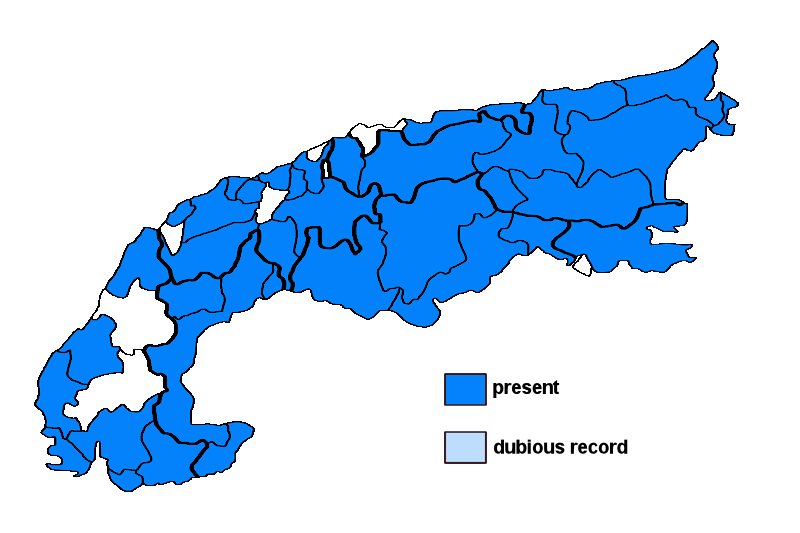Micarea prasina Fr.
Syn.: Bacidia subviridescens (Nyl.) Zahlbr., Biatora prasina (Fr.) Trevis., Biatorina prasina (Fr.) Stein, Bilimbia subviridescens (Nyl.) H. Olivier, Catillaria prasina (Fr.) Th. Fr., Catillaria prasiniza (Nyl.) B. de Lesd., Catillaria sordidescens (Nyl.) Zahlbr., Lecidea abdita Erichsen, Lecidea declivitatum Erichsen, Lecidea prasinella Müll. Arg., Lecidea prasiniza Nyl., Lecidea sordidescens Nyl., Lecidea subviridescens Nyl., Micarea polytrichi Poelt & Döbbeler, Micarea subviridescens (Nyl.) Hedl.
Lichenised. Poorly known taxon.
Substrate: bark, lignum, living mosses, rocks,
Altitudinal range: from the submediterranean/colline belt (potential vegetation: mixed deciduous forests dominated by Quercus and Carpinus) to the subalpine belt (potential vegetation: open, taiga-like forests dominated by Larix decidua and/or Pinus cembra and Rhododendron)
Note: a temperate to boreal-montane, morphologically and chemically variable species found on basal parts of old, acid-barked trees in montane forests, and on a wide range of other substrata; in its present circumscription this is one of the most common species of the genus in the Alps; however, this taxon represents a complex assemblage of species, yet to be properly disentangled.
Austria: Vorarlberg; Tirol; Salzburg; Kärnten; Steiermark; Oberösterreich; Niederösterreich (incl. Wien); Burgenland; Germany: Oberbayern; Switzerland: Bern; Fribourg; Glarus; Graubünden; Luzern; St. Gallen; Schwyz; Ticino; Unterwalden; Valais; France: Alpes-de-Haute-Provence; Alpes-Maritimes; Drôme; Isère; Haute-Savoie; Vaucluse; Var; Italy: Friuli; Veneto; Trentino Alto Adige; Lombardia; Piemonte; Valle d'Aosta; Liguria; Slovenia: Alpine and Pre-Alpine Slovenia;





